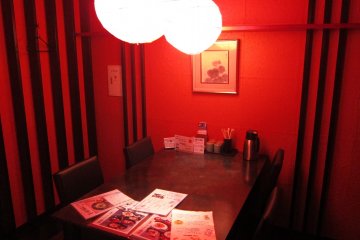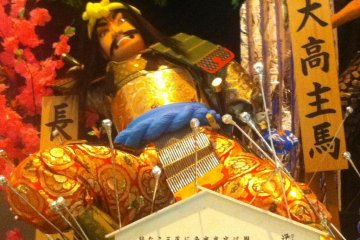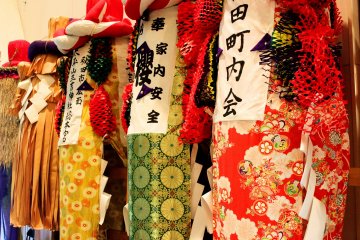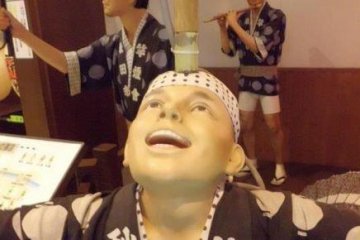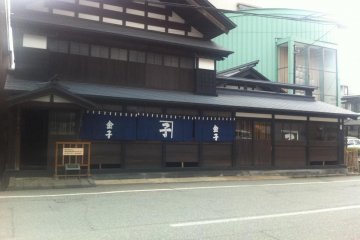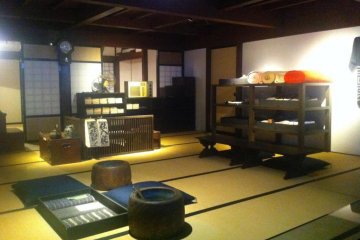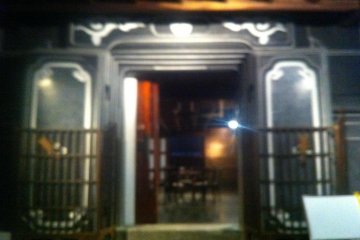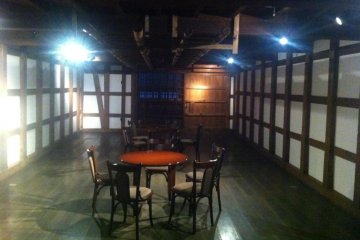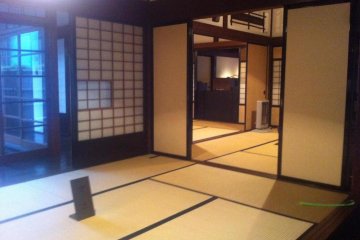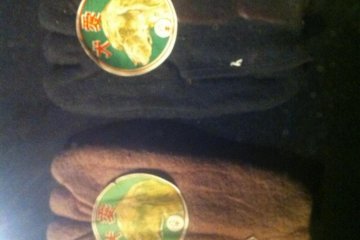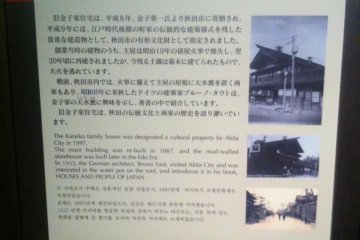In 1935, the German Architect, Bruno Taut visited Akita City and was particularly interested in the water pot on the roof of this house, which is described in his book “Das japanische Haus und sein Leben” or “Houses and People of Japan”. Bruno Taut was an architect, but it may be said that he was an accidental anthropologist, with his insightful and witty descriptions of Akita Architecture and its connections with the social mores and traditions of the Akita folk at that time. What distinguishes the architecture of the Kaneko Family Store are qualities like simplicity, humility and respect. If you can read this book, you will definitely gain a deeper understanding of the interplay between Japanese architecture and social traditions. If you can’t, the many guides here are very knowledgeable, and it is like going to an open air university of Akita history. It helps if you can understand Japanese though. If you don’t, the English descriptions around the museum give you some detail about the history of the place.
The Old Kaneko Family House Museum has a main building and a mud walled storehouse. Built in the Edo period, there are even rooms for servants. It showcases traditional motifs and interior designs from that era.
The main building was rebuilt in 1887 and the mud walled storehouse was built later. The two storehouse doors are particularly impressive. The room for the female servants has magnificent displays of the fashion at that time. What I really like about this house is the shop/ showroom, which looks like a cross between a tatami living room and a living room. When you are shopping there, it is like you are both a house guest and a customer at the same time. You could imagine yourself sipping tea while admiring the kimono textiles. Very civilised indeed! And the sliding screens open the whole room to the street, so it is an ancient way of bringing the outside, inside. And for those cold winters, closing the sliding screens very effectively blocks the cold when the shop shuts at the end of the day.
One of the oddities about this house is the water pot on the roof. People wonder why it is there, but maybe it is ahead of its time. Modern Architectural journals sometimes talk about using roof gardens, irrigated by rainwater. Maybe Mr Kaneko knows something we don’t? In 1997 the Akita City council designated the house as a cultural treasure.
While you are looking around this living treasure, why not drop into the Akita City Traditional Performing Arts Heritage Hall, otherwise known as the Kanto Festival Center or “Neburi Nagashikan” in Japanese. “Neburi Nagashi” means the washing away of sleepiness. In the past it was believed that evil spirits could take over one’s body while it was asleep, and during Obon this sleepiness was removed by showering seven times with water. Obon was also the hottest part of the year, so maybe this had other benefits. The lanterns used in the Kanto festival were called “Neburi Nagashi” lanterns.
The Center also houses artefacts from Akita Manzai (comic plays) and Kurokawa and Yamaya Bangaku (dance). There are also meeting rooms that you can hire for 1030 yen an hour. So if you are keen to practice some Akita traditional dance with your group or convention, this could be perfect for you!
The opening hours are from 9:30 am to 4:30 pm. Admission to both the Old Kaneko Family House and the Kanto Festival Center is just 100 yen. From here, it is only another five minute walk to Akarenga kyodo Kan, which is a Renaissance/ Baroque Historic House. You can a combined admission to all these museums for only 250 yen, saving you 50 yen compared to two separate tickets. I think you should visit in the afternoon an hour or two before closing, because after 4:30 pm you can walk along with the river to enjoy wonderful local gourmet and sake, such as Kagura Japanese Restaurant and Akita Dining Kamakuraya.



